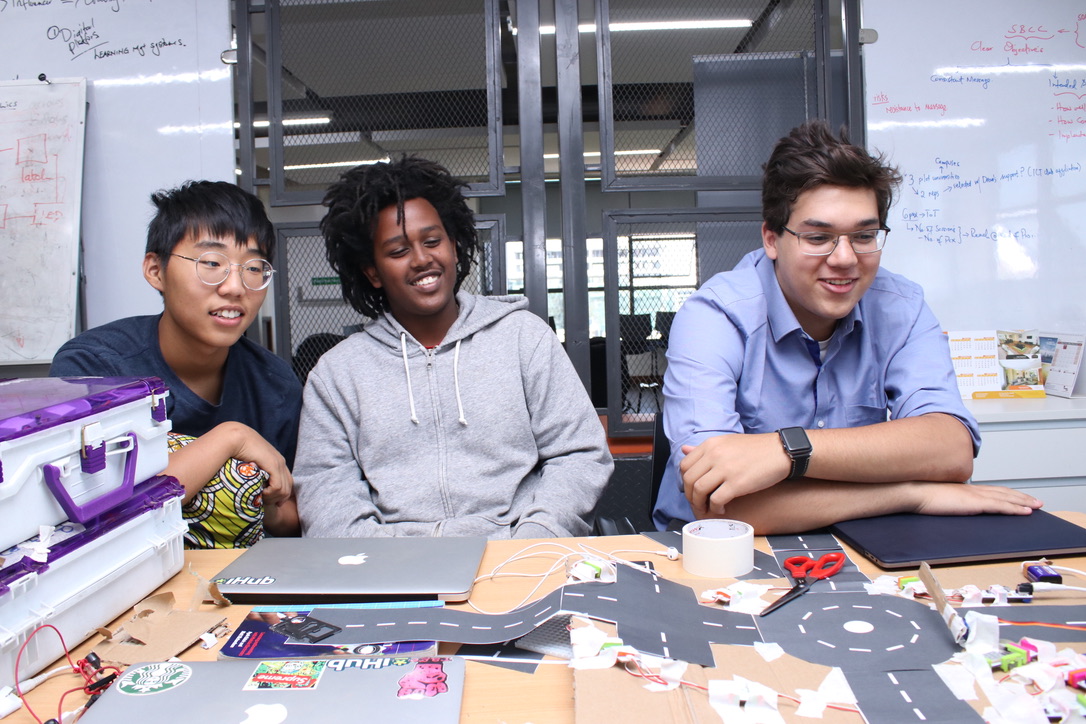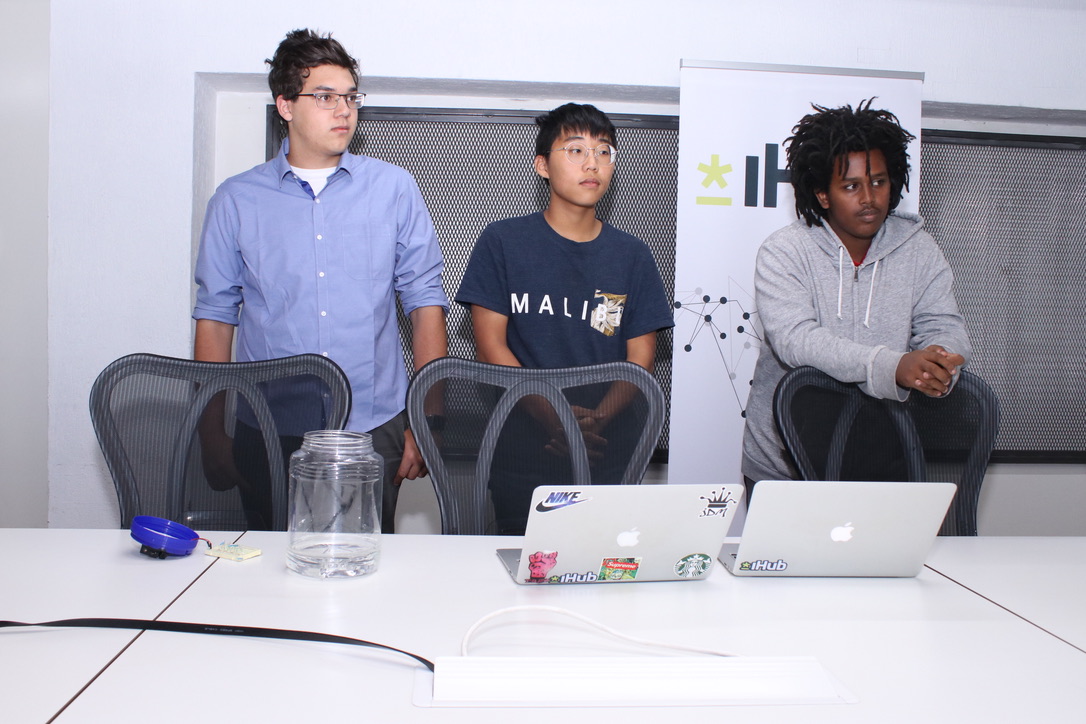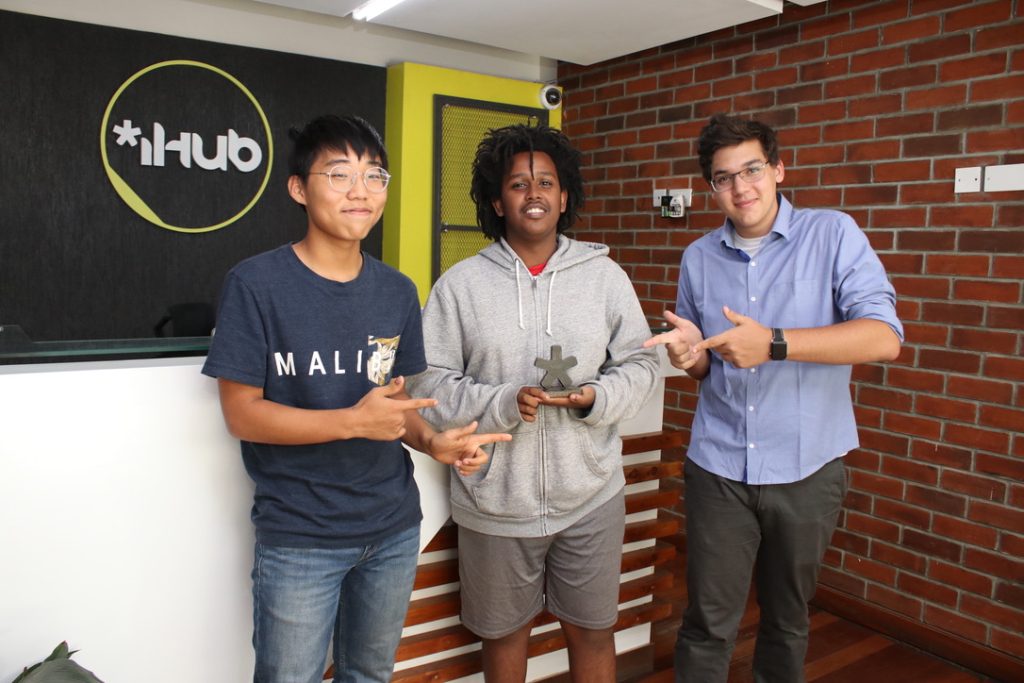by Shiva Wolf, Jiho Son and Yilma Makonnen
Day One
On the first day, we took a brief tour of the offices and looked at the other startups that work there. After the tour,we were tasked to identify an issue within our community and use the technology and materials at our disposal to attempt to solve this problem or provide a general framework for a possible solution to this issue; and prepping for an electronics workshop that we would be helping lead on Saturday. My group members and I identified both the lack of sustainable energy and clean water as the issues we would be addressing throughout this project. After hours of brainstorming and planning,we finally settled on a UV filter to provide lower-income Kenyan citizens with an energy conserving solution to the lack of clean or pure drinking water. The rest of the day was spent making revisions to our plan and makings lists of what we’d need for the prototype.
Day 2
We spent today doing more extensive planning as to what materials we would need and where we could find them. This took a little while because most places that advertised the materials we needed were vague as to how much they would cost and where we could find them. Some materials like quartz glass and activated charcoal were not found altogether, and we had to substitute. We ended by assigning roles for what we should bring.
Day 3
We spent our morning doing prep work for the actual building of the project. I stripped wires and wound things together to test, and the others worked on the charcoal filter and documentation, along with a small interview they were planning. In the afternoon, we started assembling the circuitry and testing it. I finished the first version, which worked but an LED blew. I passed it along to the others , and chaos shortly followed. We ended with a mostly working circuit, and planned to finish it the next day.
Day 4
This morning, we finished assembling the charcoal filter and, (after dropping and rebuilding it once) tested it. It sort of worked. While the water did actually come out looking cleaner, it wasn’t a huge step. It was still muddy yellow and clearly undrinkable. From there, we decided that the best path of action would be to scrap the charcoal filter concept, and focus on the UV filter. We revised our original plan to be for people with access to tap water (which is generally filtered for larger contaminants, removing the need to have the charcoal filter), but not too reliable clean drinking water. We then went on to start finalising the UV purifier. We decided that instead of a longer and more complicated wiring system, we would use a central breadboard mounted to the underside of the bottle cap. Breadboards are a central wiring grid that allows a solid frame for a circuit. The LEDs were shining directly from the top of the bottle, instead of from the sides. We ended by finalising the prototype and making sure things work.

Day 5
We started by preparing for our presentation on our product. We talked about the problem we intended to solve, our solution, how it would work, be marketed, how it was better than competition, and the science behind it. We thought (and were subsequently told) that we did well, but we needed to tone down the jargon and add some warning labels. We then finished up our parking management system model/demo, and at least tried to make it look nice and and testing that it worked. We ended by finishing up our writing tasks like this one, and other reflections.

Overall, our week at the iHub was a wonderful experience. We learned how much planning is required if a project is to go anywhere, and how much thought must be put into a product for it to meet safety specifications, durability and effectiveness standards, and human error. We liked working there because it was a somewhat realistic scenario, where we were given little to no criteria, and we were responsible for coming up with everything, finding materials (although many of those were provided), marketing, and being our own quality control. The take away from our experience is a better sense of how one is expected to manage themselves in the workplace, which, for a high school student, is priceless information. Also, an idea of what is expected in a design/engineering environment, from concept to selling, or from farm to table. If we were to go again we would want to gather more exact materials for our product and have a longer period to test its effects. We would recommend this to any student that knows or is looking to improve their self-management in a more independent environment.
